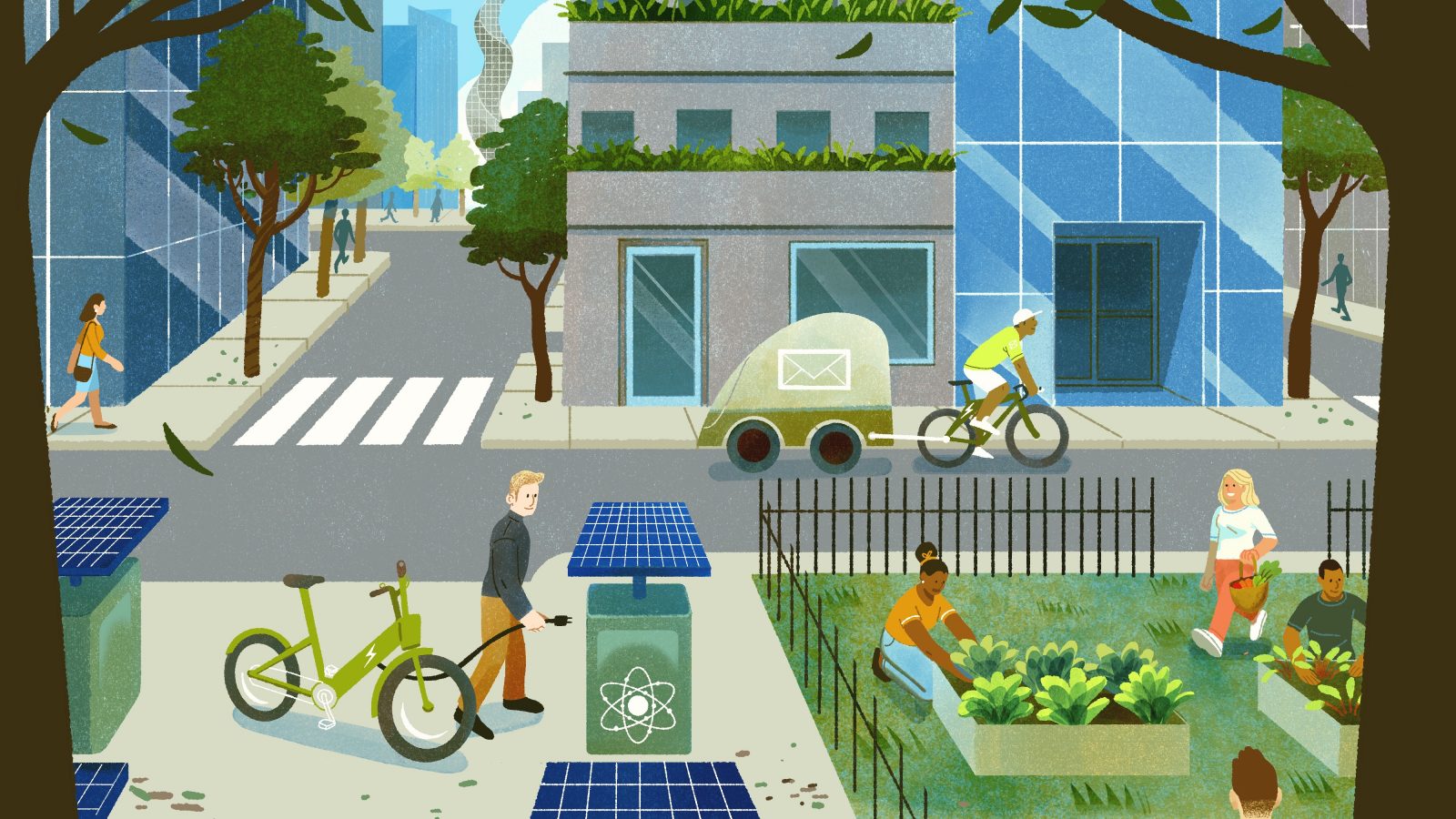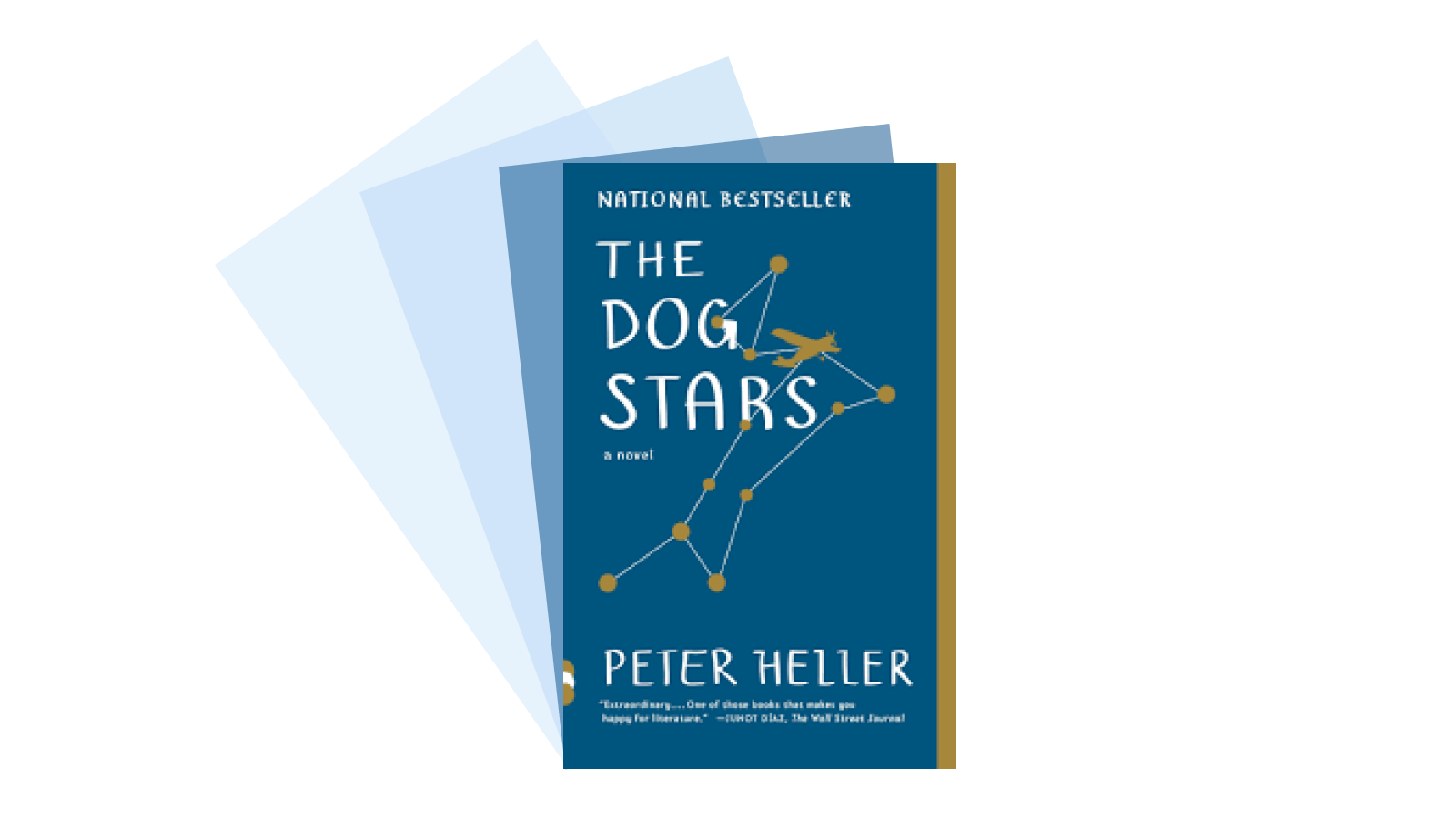Hey there,
The latest United Nations climate report, out this week, paints a terrifying picture of our future. (This video by PhD student Miriam Nielsen is the perfect summary of the report, which is known in U.N.-ese as the sixth assessment of climate science from the Intergovernmental Panel on Climate Change.)
In the face of such news, it can be tempting to tune out — or even give up. (I’m speaking as a wizened soul, having jumped into this fight right around the time when the first assessment came out, in 1990). Again and again, though, I’ve found the antidote to despair is to turn to solutions. Which is why, after all, we started Grist’s solutions lab, Fix, and which is a refrain echoed this week in a piece we published by therapist Ariella Cook-Shonkoff. Every fraction of every tenth of a degree Celcius matters — and so does every person helped, every life made a little easier, every ecosystem made a little more resilient.
The good news is, although we’ve waited far too long to tackle the climate crisis, there have never been more solutions to bring to bear, or more people working on them. And, wait for it … it’s even possible that in the next several weeks, Congress may pass the first-ever truly meaningful federal climate legislation. Look for a blue moon on August 22. (For real.)
As always, reach out to let me know how you’re feeling, and reach out to your pals to let them know about Shift Happens.
Chip Giller
Founder & Creative Officer
Your new heroes

When the people creating solutions to the climate crisis imagine the future their work could achieve, what do they see? How might we humans live, work, and play 100 years from now, if we do our jobs right in addressing the climate crisis today?
The Fix team recently asked six climate and justice leaders to envision what the world could be in 2121. Their answers included everything from open borders to affordable, abundant housing to a micromobility revolution. I’ve included snippets of the leaders’ responses below, which were part of Fix’s cities of the future series; check out their thoughts in more detail on Instagram (nifty audio visualizations included) and on the old-fashioned web.
“Lots of things are going to have to be flexible and interchangeable. I imagine much more of a Lego city that allows us to pull and move parts that make it adaptable to our needs at the time. Part of how you do that is by designing things in components and thinking about how things are used, how they’re replaced, how we’re not designing for obsolescence but we’re designing for reuse and retooling and then reuse again. I’d love to see that Lego future city that is built on a framework of equal access.”
— Mark Chambers, senior director for building emissions at the White House Council on Environmental Quality
“I’m totally imagining just tons of green space. Open borders. Accessible and available public services, regardless of status, regardless of nationality, residency. Governance that’s based on power sharing between different populations. Moving away from nation systems. It’s all centered and built around a common identity and a common humanity. That’s what really grounds the fact that there’s no need for securitized border control. And for me, that doesn’t create chaos. I see order. I see the free flow of ideas, the passage of goods.
— Amali Tower, founder and executive director of Climate Refugees
“What does a building that lasts for 250, 300 years look like? How do we build that in a way that is then giving back to the earth and giving back to all living things? I always go back to: How have we learned in the past? Much of our work is about our Indigenous populations who have lived in dense places or dense cities historically. We can learn a lot from our historic Indigenous patterns, and then apply those methods and ways of thinking to our cities.
— Joseph Kunkel, a 2018 Fixer and director of MASS Design Group’s Sustainable Native Communities Design Lab
“The city of the future looks like a place with much more equitable distribution of space — far fewer miles of road given over to asphalt and free car parking, and a much better use of our public spaces for leisure and for play. … It’s great to move people to electric vehicles, but the problem is not just the fuel source. The problem is the space, the problem is congestion and noise. And so a lot of the solutions are going to be about reducing the size of these vehicles. The micromobility revolution is only just beginning.”
— Melinda Hanson, a 2021 Fixer and cofounder of Electric Avenue
“Who knows what AI can achieve for us in terms of solutions? We’re already starting to think about stuff like universal basic income, because we realize that maybe the role of the human in society is changing. Maybe it’s not our job to just keep working more and more, but rather, now that we’ve developed all this, how can we find a way to share that surplus that we’ve created and allow humans to live a more balanced life?”
— Linda Cheung, a 2019 Fixer and founder/creative director of Before It’s Too Late
“There should be food on all the streets throughout the world. There should be food growing instead of grass. I want to see people more engaged in Mother Nature, because if you heal your mother, you heal yourself.”
— Ron Finley, food-justice advocate and “gangsta gardener”
Read the full piece and hear audio clips on the Fix site.
Your reading list

These past few days, I’ve been swept into the world of The Dog Stars, a lyrical book that takes place in an apocalyptic future, nine years after a pandemic flu has wiped out nearly all of humanity and wildfires have ripped through what had been the state of Colorado. The setting is extraordinarily grim — if more recognizable than when the book was published in 2012 — but the novel is as much about a hope that endures in its main character, Hig, than about despair. I found the book and its descriptions of the natural world and Hig’s inner dialogues too beautiful to put down.
A long time ago, as a side gig, I helped author Peter Heller to insulate the ceiling of the dirt-brick home he was building in the Western Slope of Colorado. Not sure why it took so long for me to pick up this book, but I’m sure glad I did, maybe especially this week.
Your pick-me-up
Remember the blue moon thing? This may be the only time this decade (and the first time ever) that meaningful federal climate legislation stands a chance of passing. David Roberts unpacks what’s at stake and what is and isn’t possible to get passed, as Democrats navigate through abstruse Senate rules to try to push through a wide-spanning budget plan tackling many of their priorities. Call4Climate, cofounded by 2020 Fixer Leah Stokes, makes it easy for you to contact your legislators to voice where you stand on the topic.
Fossil-free parking. Here’s a bit of infrastructure that would look good in cities and towns across America: bike garages, in place of (car-)parking garages. This slideshow depicts a 1,200-bike garage in Uppsala, Sweden, in all its glory.
Refill ‘er up. Zero-waste businesses are on the rise in the U.S., including Oklahoma’s first “refillery,” where people bring their own containers to buy personal-care, pet-care, and cleaning supplies, all sourced in bulk from small businesses. Companies like ZeroGrocery, a plastic-free online store that delivers groceries to Bay Area folks in reusable containers and then collects them for reuse, have been able to thrive even during the pandemic.
A breath of fresh air. Speaking of the Bay Area, frontline communities in the East Bay will soon be able to breathe easier, due to an air-district decision requiring two heavily polluting refineries to slash their particulate emissions within five years by a combined 70 percent. The decision represents a big win for community advocates, who have been fighting for stricter air-quality standards for years. One pediatrician from the area said the new requirements “will make my patients immediately healthier.”
The coral of the story. A 100-mile stretch of the world’s second-largest barrier reef, the Mesoamerican Reef off the coast of Mexico, is the first natural asset to be protected by an insurance policy. The plan proved itself in late 2020, when Hurricane Delta hit the Carribean; the insurance payout funded recovery efforts by the local reef brigade — part of a regular maintenance program set in place by a trust established in 2018. The arrangement may be a model for putting a monetary value on other ecosystems to ensure that they and the services they provide will be protected (a healthy coral reef can block up to 97 percent of a wave’s energy before it hits the shore).
Your weekend plan
Go plum crazy

Plums. Yums. It’s heavy baking season in the Giller household — and heavy plum season in the Pacific Northwest. If you or your neighbors also have ripe, juicy plums flooding your yard, don’t turn away from the problem! Turn toward the solution — of delicious plum torte. (Or, hot tip from my colleague and — who knew? — former gleaner Claire Elise Thompson: If you really can’t deal with the downpour, register your tree with a local gleaning organization like Seattle’s City Fruit.)
This recipe is adapted from Marian Burros’s famous one in the New York Times.
INGREDIENTS
- ¾ cup sugar
- ½ cup unsalted butter, softened
- 1 cup unbleached flour (sifted, if you’re feeling fancy)
- 1 teaspoon baking powder
- A pinch of salt
- 2 eggs
- Approximately 24 halves, pitted purple plums
- Sugar, lemon juice, and cinnamon, for topping; don’t be shy about the lemon juice!
INSTRUCTIONS
- Heat oven to 350 degrees.
- Cream the sugar and butter in a bowl. Add the flour, baking powder, salt, and eggs, and beat well.
- Spoon the batter into a springform pan of 8, 9, or 10 inches. Place the plum halves skin side up on top of the batter. Sprinkle with sugar and lemon juice, and up to 1 teaspoon of cinnamon (we go light on the cinnamon).
- Bake for about 1 hour. Remove and cool. Serve plain or — you better believe it — with whipped cream.



